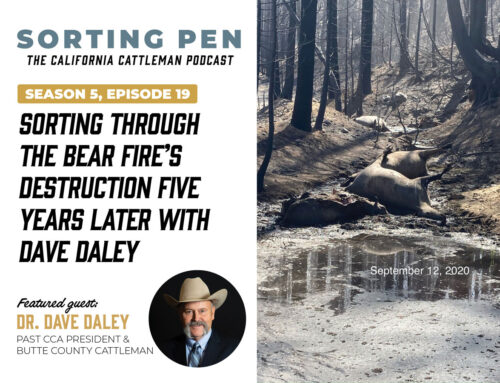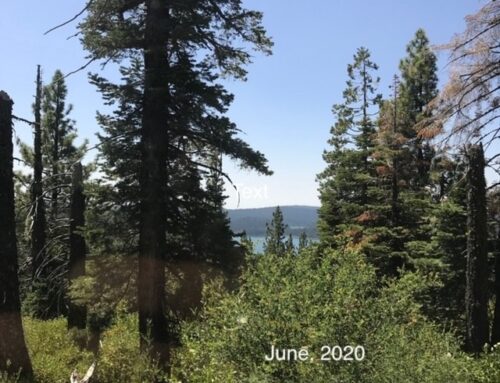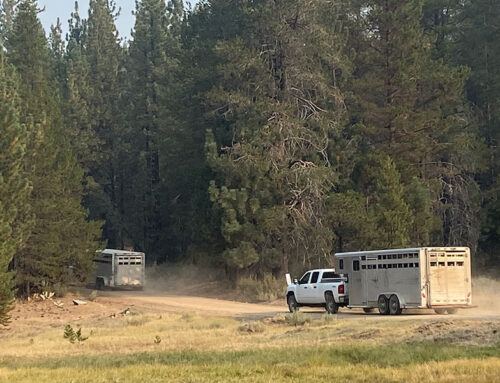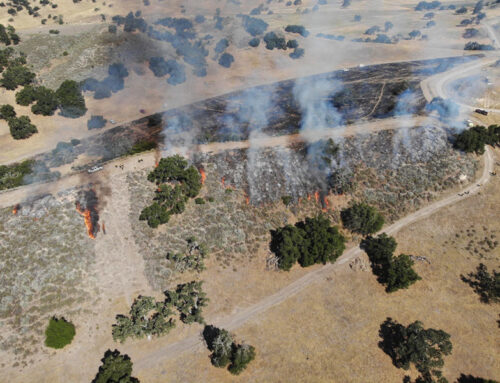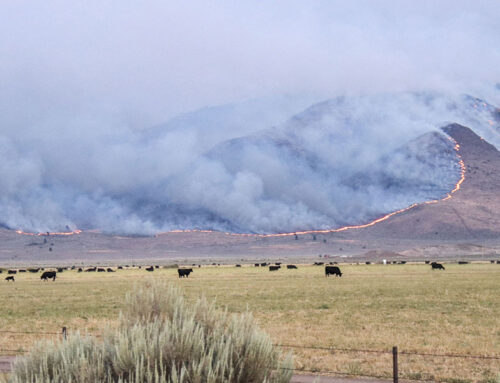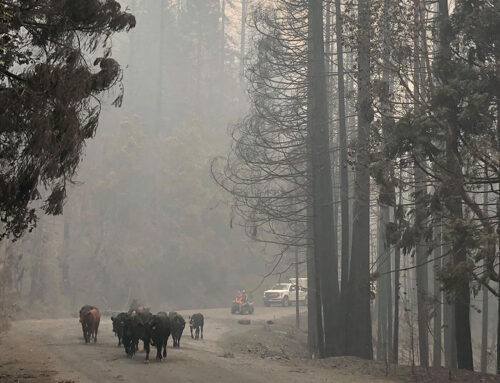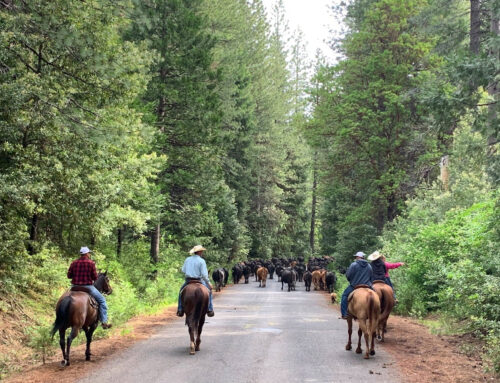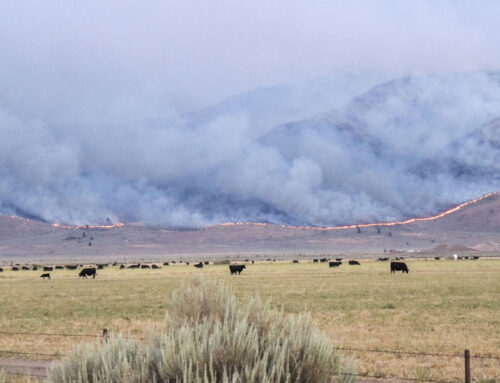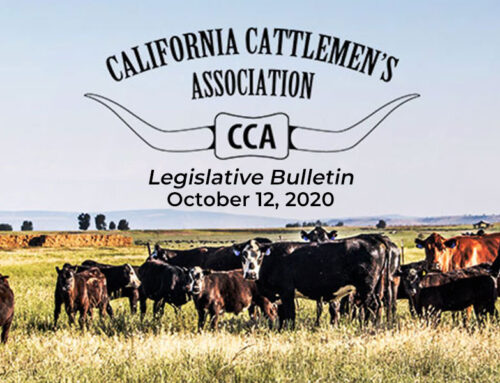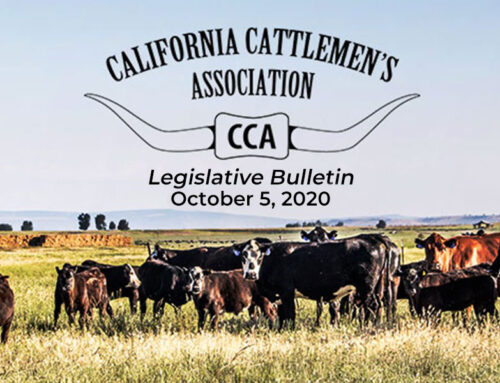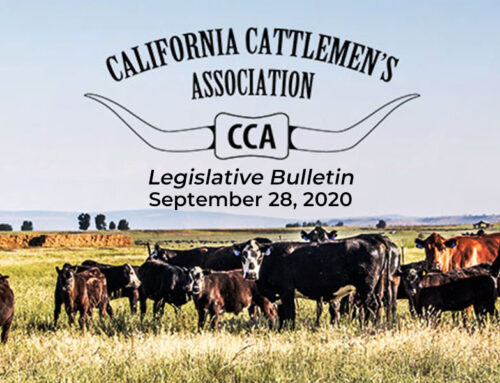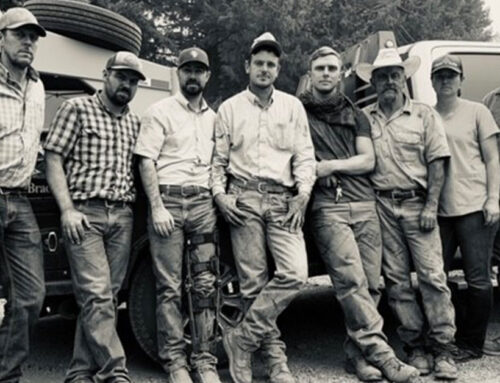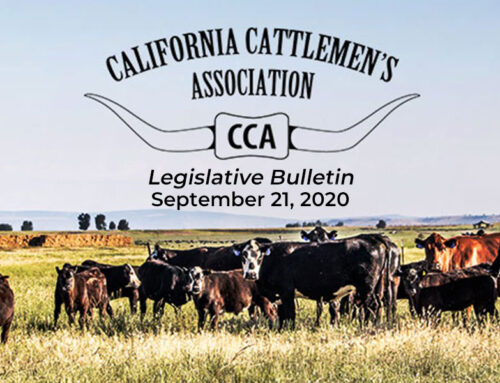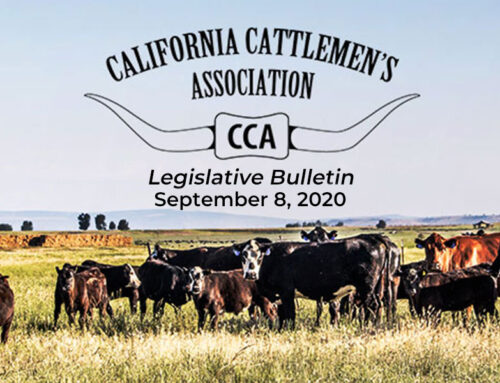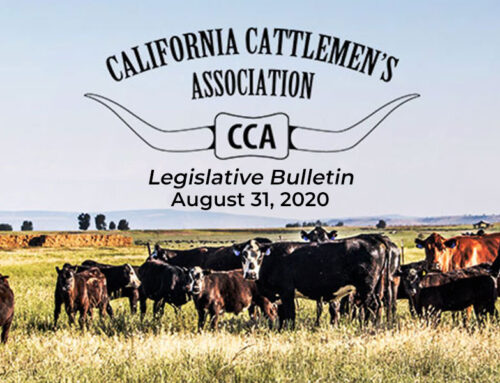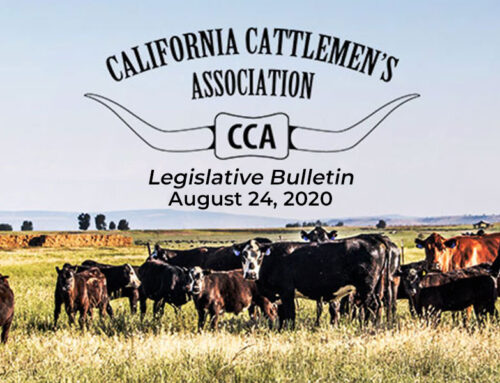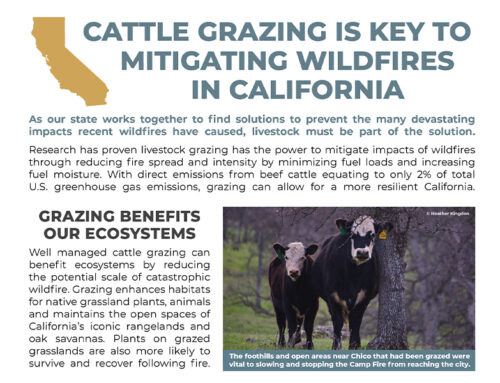Reflections on a tragedy…Two years later
By Dave Daley, Butte County Rancher & CCA Past President
Follow up to “I cry for the mountains and the legacy lost | The Bear Fire” from Sept. 2020, Requiem for a Forest from April 2021 and “Reflections on a tragedy….” from Sept. 2021.
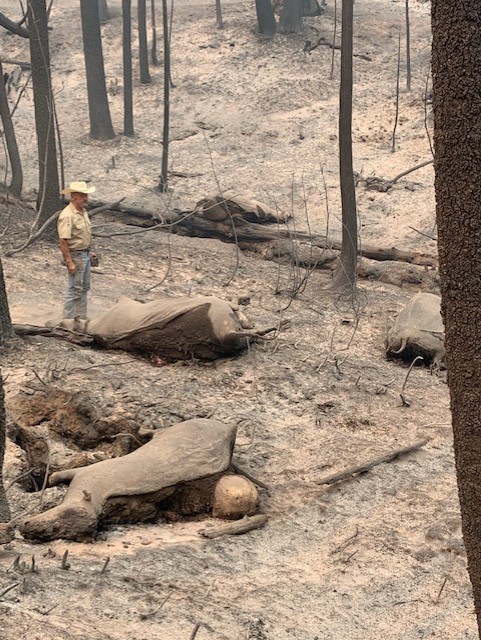 Two years ago to the day I received a call that the Bear Fire (part of the North Complex Fire) had jumped the Middle Fork of the Feather River and was tearing through our cattle range, between La Porte and Feather Falls heading towards Oroville. I will never forget that day or the weeks that followed. Everything destroyed. Sixteen people killed in the town of Berry Creek and the entire little town obliterated. The community of Feather Falls was destroyed. Hundreds of our cows, all the wildlife and the incredible ecosystem above Lake Oroville were completely erased. Forever. I have visited other post-fire landscapes throughout California (those scarred by the Dixie, Thomas, Creek, Caldor and others). Those fires were horrific, but I have never seen anything of the intensity of the Bear Fire. Literally nothing alive. Steep terrain, winds that exceeded hundred-mile gusts at times, massive fuel loads…and the devastation was complete. There were areas where the burnt pine needles were literally at right angles from the tree –charred in place by the incredible winds.
Two years ago to the day I received a call that the Bear Fire (part of the North Complex Fire) had jumped the Middle Fork of the Feather River and was tearing through our cattle range, between La Porte and Feather Falls heading towards Oroville. I will never forget that day or the weeks that followed. Everything destroyed. Sixteen people killed in the town of Berry Creek and the entire little town obliterated. The community of Feather Falls was destroyed. Hundreds of our cows, all the wildlife and the incredible ecosystem above Lake Oroville were completely erased. Forever. I have visited other post-fire landscapes throughout California (those scarred by the Dixie, Thomas, Creek, Caldor and others). Those fires were horrific, but I have never seen anything of the intensity of the Bear Fire. Literally nothing alive. Steep terrain, winds that exceeded hundred-mile gusts at times, massive fuel loads…and the devastation was complete. There were areas where the burnt pine needles were literally at right angles from the tree –charred in place by the incredible winds.
So, what has changed in two years? There has been some progress in the discussion to reduce fuel loads through prescribed fire, thinning, grazing and timber management – but the conversation has resulted in little action. The good: There are more prescribed fire associations being organized; the California Cattlemen’s Association led a legislative effort to create an “Ag Pass for Livestock,” loosely based off my experience trying to gain access to my range to protect livestock during the Bear Fire, that has been signed into law by Governor Newsom; legislation was passed and signed limiting liability for prescribed fire practitioners; and there is increasing recognition (and data) that grazing to reduce fuel loads can lower fire intensity. Good. But it is not nearly enough.
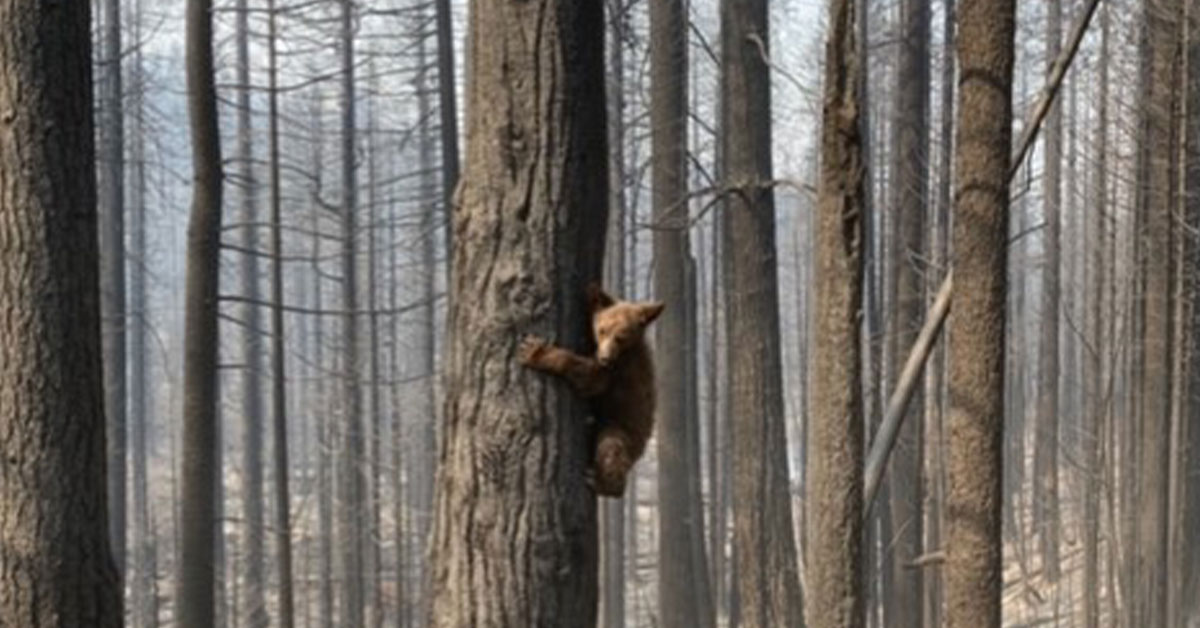
“We see a burnt bear cub trying to climb a tree, two miles further a mature bear, burnt but staying in the water trying to ease the pain.”
I have been having conversations with legislators and regulators in Sacramento and Washington, D.C. who have begun to recognize the scope of the problem that is devastating the West. Talk is cheap, but at least acknowledging the challenge with some bipartisan agreement provides a slim ray of hope. Yet, there are still no projects at scale – landscape level projects that truly could change the trajectory of destruction. I see local prescribed fire associations that are excited to do a 20-acre control burn! I applaud their enthusiasm and it is a start, so I am not being critical of the effort, but it is a drop in the proverbial bucket. We spend resources to meet and map and study and discuss and form groups to study it again. Sorry – that is a waste of precious resources (people, time and dollars) that should be at work on the landscape. As I said two years ago…DO SOMETHING. Please. Ask those who live and work on the land for solutions.
I have yet to see meaningful resources directed to the post-fire management landscape. What about government programs to assist private landowners and state and federal land management agencies with post-fire cleanup, recovery and reforestation? Many of these lands are left with dead timber, only to have brush sprout in the deadfall, creating yet another massive fuel load. Timely post-fire management would allow these lands to become natural fuel breaks to prevent the next megafire. Why haven’t we actively applied the proven tools of prescribed fire, replanting, timber management and grazing?
It is almost as if once it is burnt, the government ignores the problem and focuses resources elsewhere.
To be blunt, the government has created impossible legislative and regulatory barriers (the California Environmental Quality Act and National Environmental Policy Act, for example) that bureaucratize the rapid deployment of resources to even rebuild communities, let alone the landscape. Paradise, the town destroyed by the 2018 Camp Fire just received word of federal funding to rebuild infrastructure … four years later! And yet, the natural lands – the water, the forests, the wildlife and the people that live there – are forgotten. And yet those lands belong to all of us. I wish there was some consideration given to our ecosystems that literally support us all. Out of sight, out of mind? Tragic.
Cattle ranchers can be part of the solution if resources are provided to help them create significant fuel breaks to give first responders a real chance. As a collective, cattle ranchers own or manage over 38 million acres of rangeland in California. And as a group, they are the largest property owners and managers in the state.
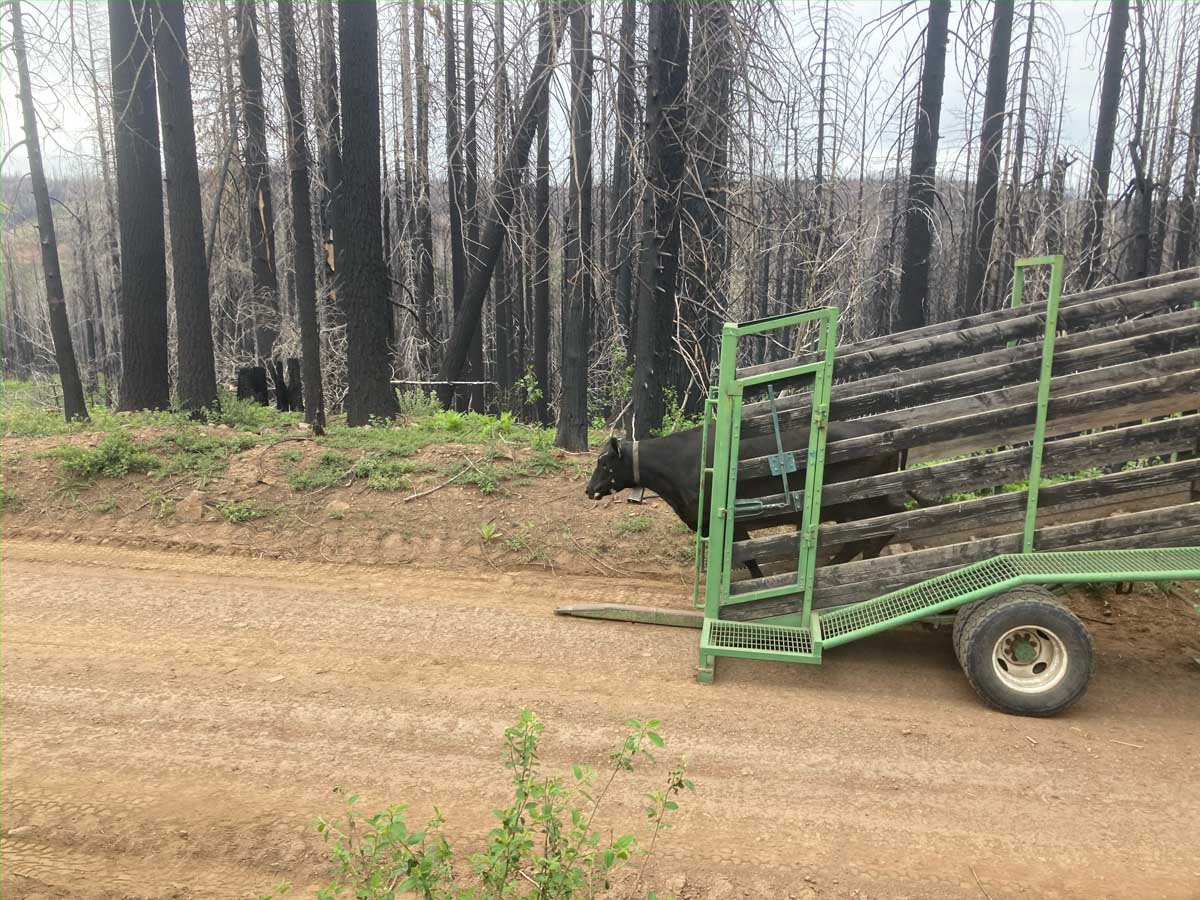
Unloading cattle in the mountains earlier this year.
We took a small “test” group of cows back to the Plumas National Forest this year. It has been ugly and difficult. It is not the spectacular beauty of the Sierra Nevada that we have loved forever. But it was important to all my family to continue. My kids (not kids anymore!) were as adamant as me and said, “we’re going.” The cows are doing fine on the limited recovery we are seeing on the allotment, and we hope to be able to take our full permitted numbers again next year. But the contrast between the checkerboard of private and federal lands is shocking. Sierra Pacific Industries (our landlord on half the range) has aggressively removed the burnt timber for the past two years and has replanted millions of trees. The Forest Service has done nothing. The Plumas National Forest just released a very small timber sale of a few hundred acres along the only primary government road in the range. The dense canopy of burnt trees has been standing dead for two years, waiting for a big north wind when the black giant trees will all fall at once. There is no value in the timber and no mills that have room to take the logs. The federal lands are a massive deadfall waiting to burn again. At least 35,000 acres of devastated federally owned land are completely untouched in my grazing allotment alone! Bureaucracy doesn’t work. The wheels are too slow, the hurdles too high and the result can be seen in any of these post-fire landscapes on federal and state land.
We burnt over 4 million acres in 2020, and 2.5 million acres last year, and I expect we will exceed that this year. Once it’s burnt, it is forgotten. I won’t forget the Bear Fire. Ever.
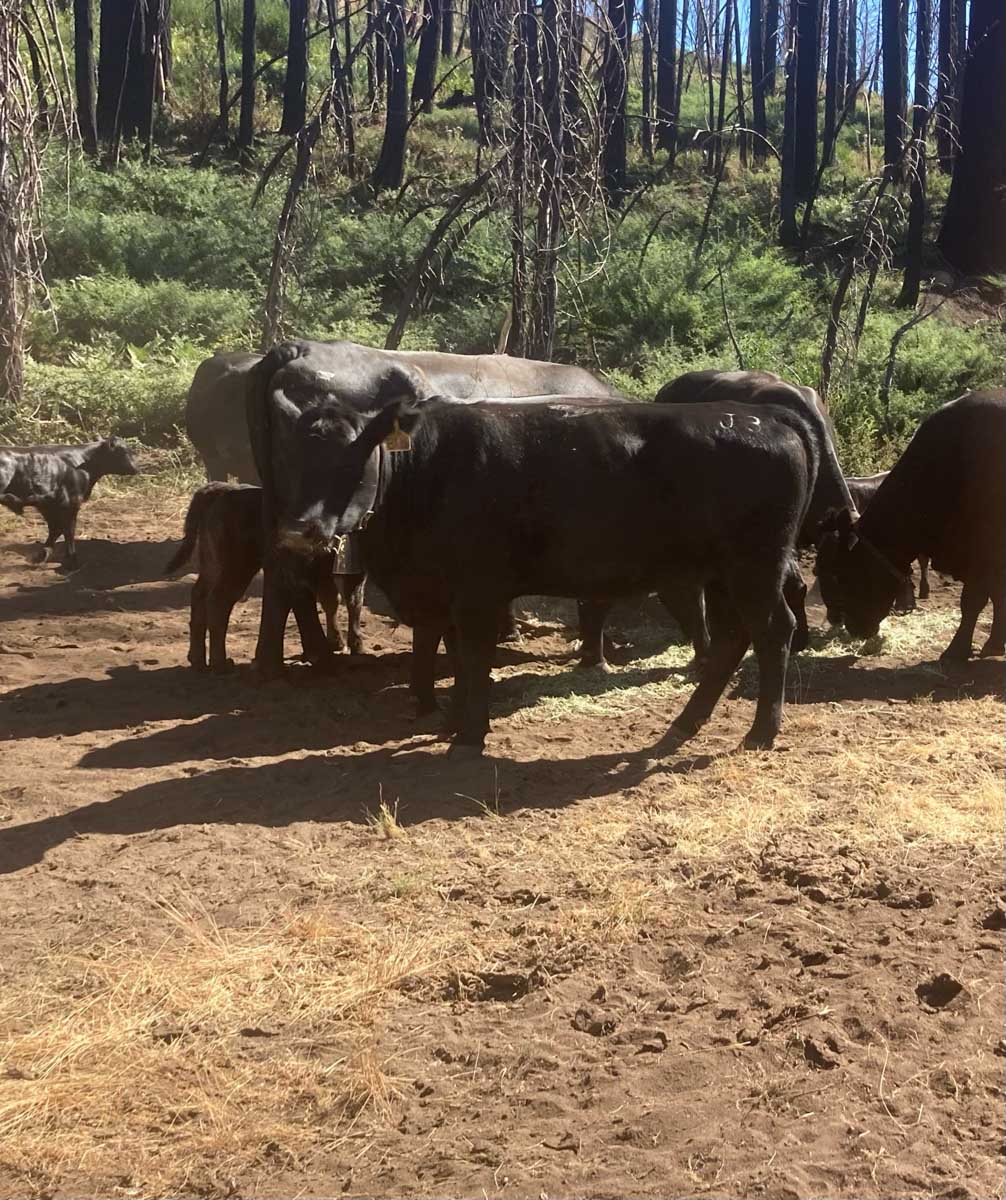
Juni’s bottle calf two years after finding her in the mountains post-fire.
Our cows are starting to calve in this blackened landscape. I saw several baby calves today. The beautiful forest of my childhood and the generations who came before is no more. The dead trees stand as silent beacons and reminders of our arrogance and ignorance. The roar of silence echoing down the dead canyons has replaced the constant murmur of life. We created this devastation and have no one to blame but ourselves. Not listening to the land. Not listening to the wisdom of the past. It saddens me.
And the three day old calf that we found amid that devastation two years ago that I gave to my baby granddaughter, Juni? I saw that young cow in the mountains today. We took that orphan and raised her on a bottle. This past May she went back to the land where she was born during that hellish maelstrom. How did she make it when hundreds of others did not? We will never know. Juni, now two years old, was with us when we unloaded her young cow in the mountains. Juni won’t quit either.
Resilient? Ranchers define the word.
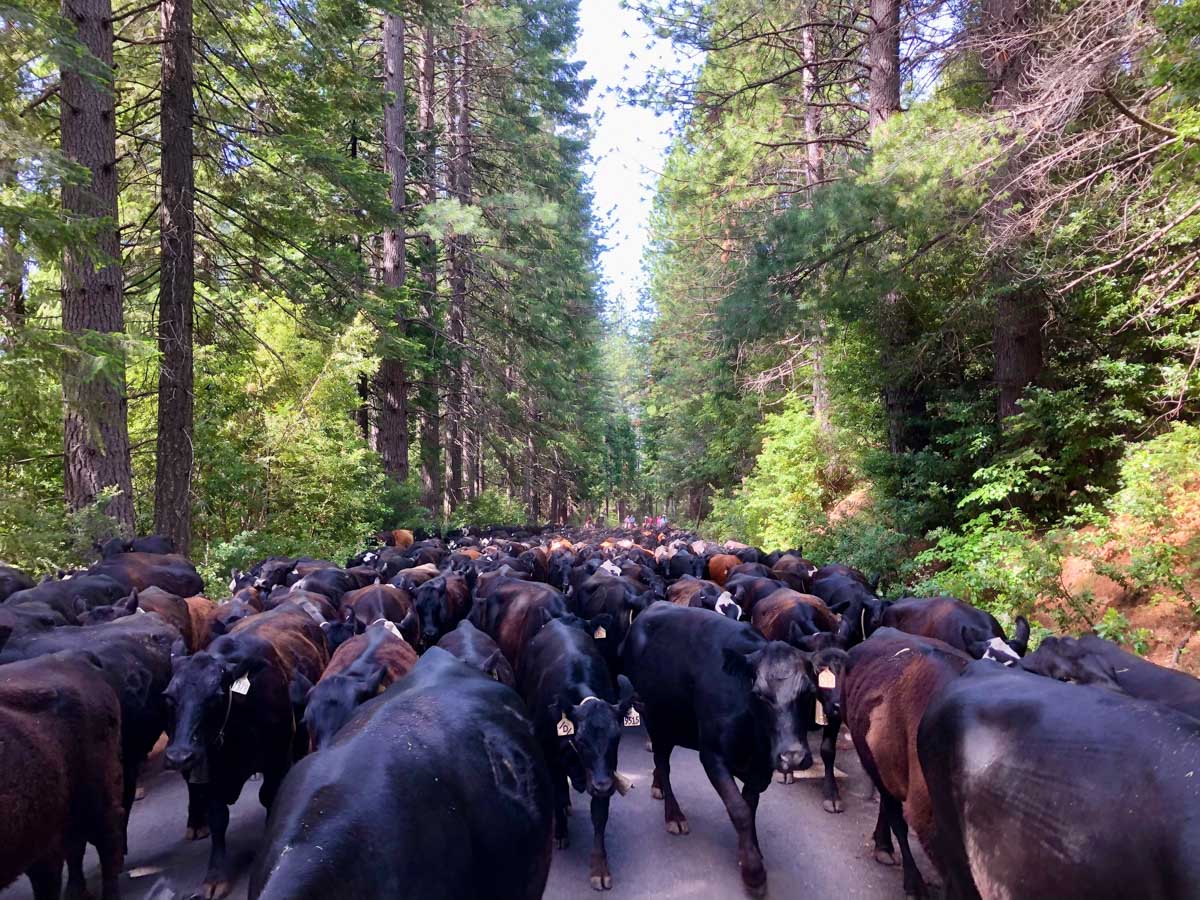
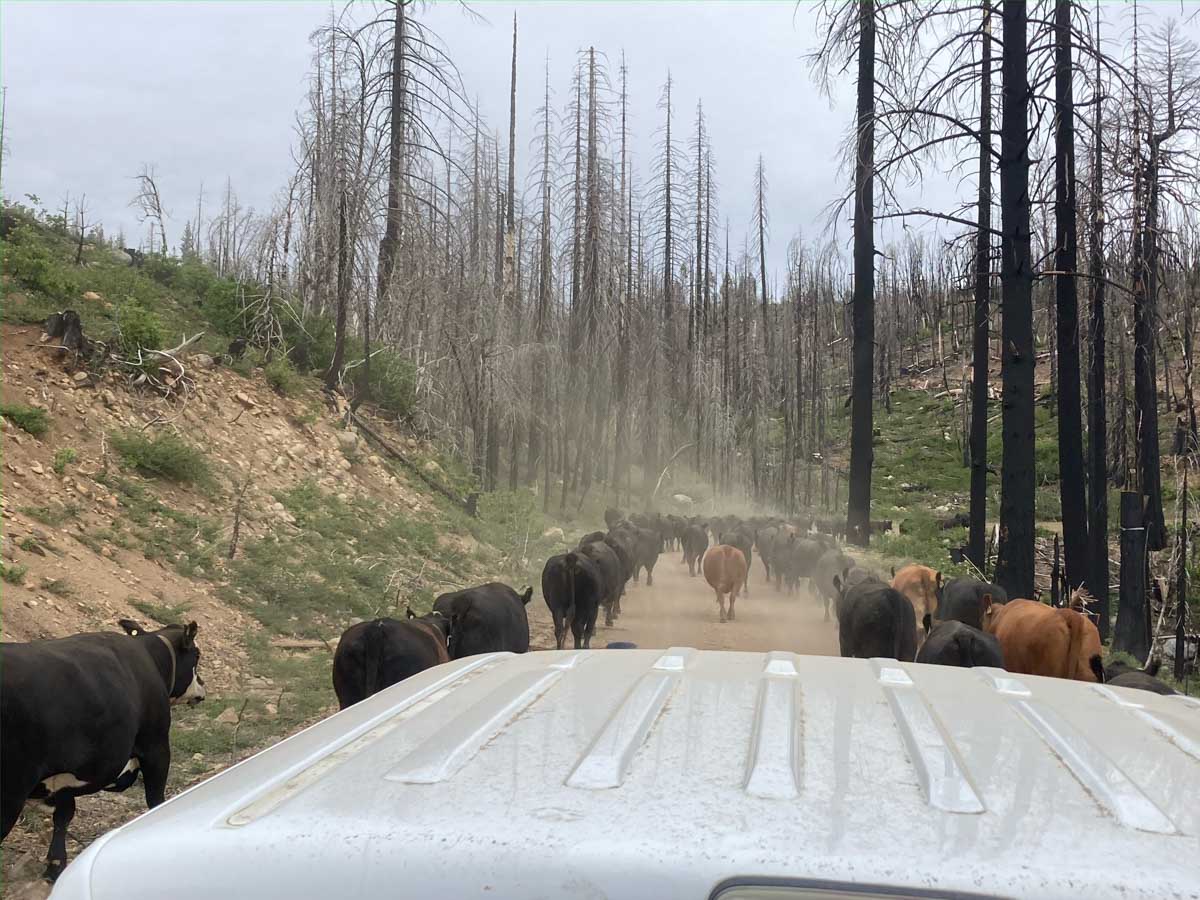
Photos courtesy of the Daley family.


